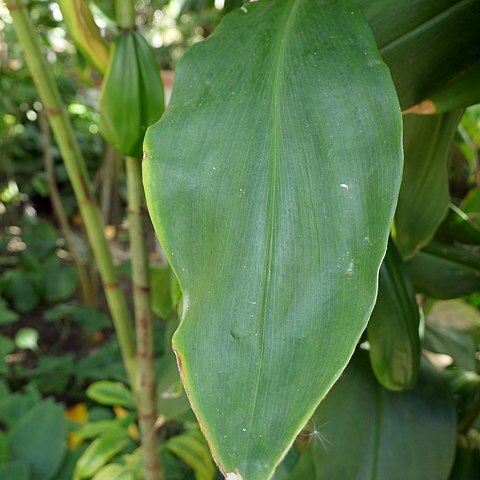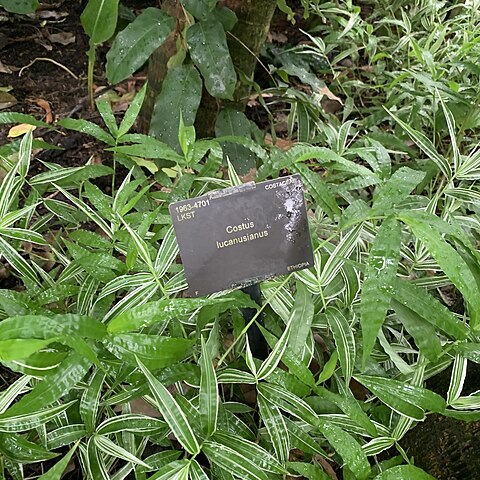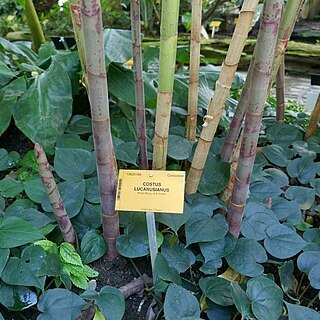Perennial herb with erect leafy stems 1.5-3 m. tall.. Leaves elliptic, 21-24 × 4.5-6 cm., apex acuminate, narrowed below to the rounded or subcordate base, appressed pubescent beneath, otherwise glabrous; petiole 5-9 mm. long; ligule coriaceous, 1.5-3 mm. long, with a raised coriaceous ridge, with a ciliate margin, surrounding the stem at the ligule-base; sheaths smooth, glabrous, slightly striate when dry, green, often with dark red markings when alive.. Inflorescences (?always) terminal on the leafy shoots; floral bracts oblong, rounded at the apex, ± 2.5 × 1 cm., green, with basal purple markings, each subtending 2 fully developed flowers; bracteoles boat-shaped, keeled, coriaceous, pale green, the larger to 2 × 1 cm., the smaller narrower, to 2 × 0.6 cm.. Calyx tubular, green, exceeding the bracts, 2.2-3 cm. long, with 3 acute often recurved teeth 5-6 mm. long with narrow scarious pubescent margins.. Corolla-tube ± 2 cm. long, hairy inside; petals white, semi-transparent, oblong, 2.5-2.6 cm. long, acute and hooded at the apex, narrowing to the base; labellum broadly triangular, funnel-shaped, ± 3 cm. long and wide, dark red towards the margin, with a central yellow streak which does not extend into the tube.. Stamen narrowly triangular, tinged red at the tip, ± 2.5 × 1 cm.; anthers 8-10 mm. long.. Mature fruits and seeds not seen.. Fig. 1/1,2, p. 5.
More
A herb. It has underground rhizomes or underground stems. It is a plant that keeps growing from year to year. It grows 3 m tall. The leaves are simple and arranged in spirals. The leaf blade is 21-24 cm long by 5-6 cm wide. It is rounded at the base and tapers to the tip. The flowers contain both sexes. There is a red funnel shaped tip. The fruit is a narrow capsule about 1 cm long. It has many small black seeds.
A tall herb, stems 6-10 ft. high;



